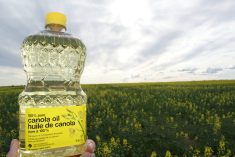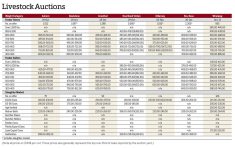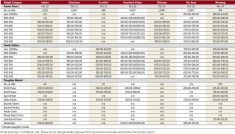“Normal” has long been thrown out the window only a month into Donald Trump’s new United States administration. The sheer volume of crazy coming out of the White House, not to mention whatever it is Elon Musk is up to, can be next to impossible to keep track of. That’s partially by design, as Trump, Musk and their compatriots ‘flood the zone’ with so much news every day that what’s truly important can fall through the cracks.
Changing the name of Greenland to Red, White and Blueland, as an actual bill introduced by a Republican congressional representative proposes, is good at generating sensational headlines — but is largely political theatrics. It hits closer to home, but the same can hopefully be said of Trump’s musings about Governor Trudeau and Canada becoming the 51st state.
For a largely meaningless event, Canada’s overtime win in the 4 Nations Face-Off tournament gave a boost to the entire country’s psyche, but the looming tariff threat remains.
Read Also

Foggy grain market predictions for 2026
Many factors are pushing and pulling at grain markets as farmers leave 2025 behind and start considering what 2026 will bring.
From an agricultural standpoint, sudden changes to U.S. immigration policy — including expanding Guantanamo Bay to house “the worst of the worst” — has cast a pall over large portions of the U.S. agricultural sector, as legal migrants get caught up in the broad dragnet. The U.S. meat processing industry relies heavily on migrant workers, as does the fruit and vegetable sector. Cuts to U.S. aid projects and uncertainty in the biodiesel sector will also influence agricultural markets going forward.
However, tariffs remain the key issue facing agricultural markets. Will tariffs be imposed? What will the retaliation be? How will the flow of commodities shift?
A lack of real concrete news on the tariff front during the week was generally deemed as supportive in the grain and oilseed futures markets.
Canola hit its best levels in three months, while corn traded at its highest levels in over a year. The soy complex was also firm, although the advancing Brazilian harvest tempered the upside there.
Cold weather in both Russia and the U.S. Plains underpinned wheat futures in mid-February.
However, with only a week left before the postponed U.S. tariffs on Canada and Mexico are set to come into effect, the trade-related volatility should return in the latter half of the month.
“Absolutely nobody knows what’s going to happen,” said Bob Lowe, past president of the Canadian Cattle Association and current president of the Global Roundtable for Sustainable Beef, talking about the trade situation to Reuters in early February.
Lowe made his comments following a recent trip to the National Cattlemen’s Beef Association’s CattleCon conference in Texas where tariffs were discussed, but little headway was made.
“We’re awfully thankful we got a 30-day reprieve, but at the end of the 30 days what happens? Absolutely nobody is making any predictions,” added Lowe.
Grain traders on both sides of the border have been expressing similar sentiments when asked for their insight on where markets may be headed. One trader told me that after over 30 years in the business, he thought he had a good sense of what moved markets. However, the supply/demand fundamentals and general technical trends he’d relied on for years have all become meaningless — with the day-to-day trade now highly dependent on the latest musings from Trump.
The Overton Window is a term used to describe the range of ideas generally considered acceptable by society, with politicians historically risking their careers if they step too far out of that window. However, the Trump playbook is all about smashing that window — with the normalization of formerly extreme views making what was once unimaginable a possibility.
The provocation is not by accident but rather can be seen as a strategic tool bringing the U.S. ever closer to authoritarianism and fascism. Under that light, the feasibility of purchasing Greenland or making Canada the 51st state is secondary to expanding the conversation of what’s normal and mainstream. Keeping an eye on tariff news is one thing, and prices will continue to rise and fall, but all those trying to keep their heads above water in the firehose of news coming out of the U.S. administration would do well to consider what the end goal of the chaos may be.















